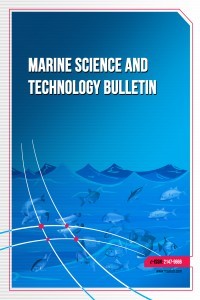
Marine Science and Technology Bulletin
Yazarlar: Familusi OLUWATOSİN ADEKUNLE
Konular:Balıkçılık
DOI:10.33714/masteb.744882
Anahtar Kelimeler:Binary logistic regression,Clarias gariepinus,Feed conversion ratio,Jaccard similarity score,Numerical optimizer,Proximate analysis
Özet: Aquaculture in developing countries faces a lot of challenges that are barely being addressed. With feed taking nearly 70% of the total production cost, it becomes imperative to develop means of optimizing how research is conducted into feed development. Feed conversion ratio as a measure of feed quality can be used to quantify in retrospect the appropriateness of feed fed to livestock, particularly, Clarias gariepinus . From the study, binary logistic regression can in simple terms, determine if prospective feed will perform below or above the acceptable level of 1.5, based on its composition and proximate analysis values. Data from similar experiments are normalized and split into train and testing data to fit a logistic regression model, three numerical optimizers were used including liblinear, Newton-CG, SAG and accuracy of the models were compared using the confusion matrix, and Jaccard similarity score. An accuracy value of 0.8 was observed in the model regardless of the numerical optimizer, this indicates the appropriateness of the model in predicting either high or low FCR for feed types. The probability of prediction showed disparity among liblinear and SAG/Newton-CG solvers. Liblinear solver showed close probabilities in predicting if values will be 1 or 0. While a similar prediction was made by all solvers, this indicates a possible affinity for error when the solver is used. This is also indicated with a logloss of 0.65 as compared to 0.51 in both SAG and Newton-CG solvers.